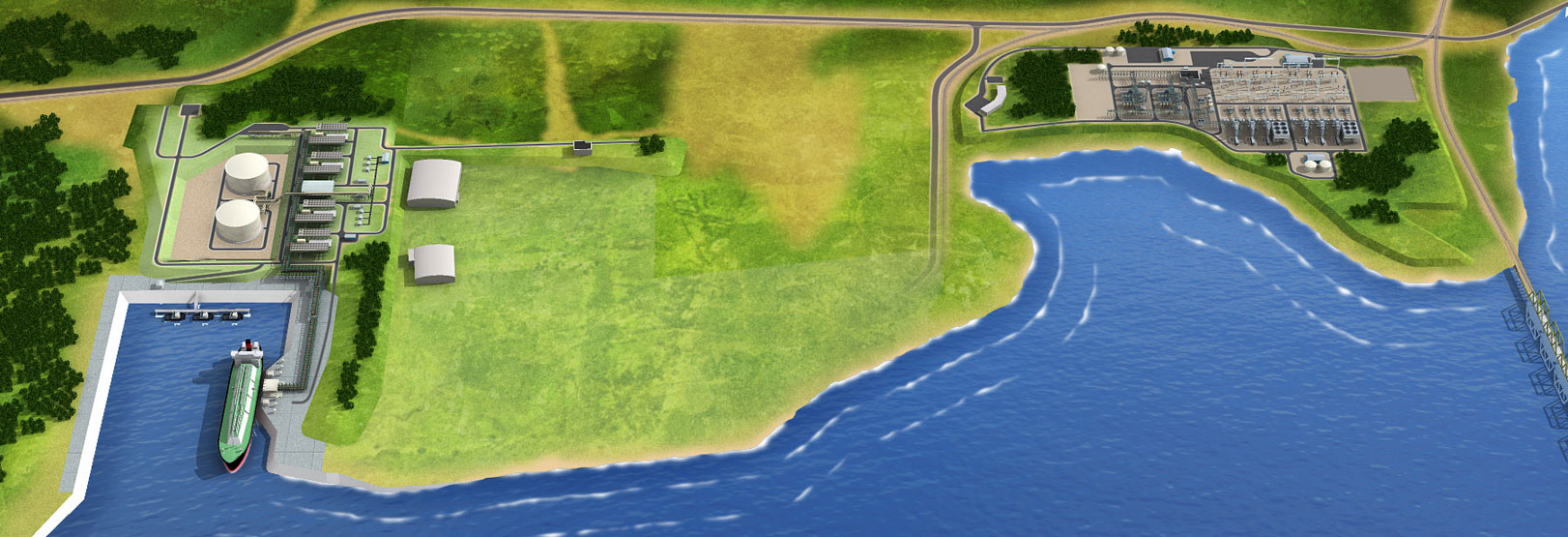On Sept. 30, the Federal Energy Regulatory Commission approved the final environmental impact statement for a contentious $7.5 billion Liquefied Natural Gas export facility, pipeline, and power plant in Coos Bay, Ore. More approvals are still needed.
"If approved, Jordan Cove LNG and Pacific Connector [Gas Pipeline Project] would construct a natural gas liquefaction and export facility with an adjacent [420 MW natural gas-fired combined cycle power] plant, along with a 232-mile natural gas pipeline stretching from Malin [Klamath County] to the terminal," writes James Cronin for the Portland Business Journal.

While the approval was critical, more are necessary before construction can begin.
“We’ve been here before with FERC and we will push back on their flawed analysis once again,” Susan Brown, an attorney with the Western Environmental Law Center, said in (a) statement.
“Most importantly, we know Oregon has the legal authority and ample reasons to reject this project, and we are counting on Governor [Kate] Brown to stand up for all Oregonians.”
Western Environmental Law Center explains the interesting economic background of LNG facility that reflects the transition of the United States from a major energy consumer to a major producer (as well as a consumer).
Initially, the project was planned to allow for natural gas to be imported at the Jordan Cove terminal then piped to California and Nevada markets. But the project changed in September 2011 to export LNG from Canada and the US Rocky Mountain region to markets in Asia.
A final approval from the U.S. Department of Energy is needed. Sen. John Barrasso (R-Wyoming), a member of the Committee on Energy and Natural Resources, told the Associated Press:
The administration has given communities along the Gulf Coast and East Coast the opportunity to access overseas markets," Barrasso said in a statement. "It must not leave the West behind."
All of the approved LNG export facilities [PDF] in the U.S. are along the Gulf Coast plus one in Cove Point, Maryland.
But approvals alone do not guarantee construction of these facilities.
"Plummeting crude oil prices have dimmed prospects for soon-to-start U.S. liquefied natural gas exports, Bank of America Corp. said in a note to clients [on Aug. 24]," wrote Christine Buurma for Bloomberg News on Aug. 25.
A July study from Brookings Institution concluded that competition from foreign LNG competitors would also suppress construction of new U.S. LNG export facilities, according to a June article in FuelFix.
In an unrelated energy development setback in Coos Bay, it appears that a renewable, offshore wind facility posted here last year will not be going forward.
Hat tips to The AASHTO Daily Transportation Update (Oct. 01) and Dave O'Leary, Maryland Sierra Club.
FULL STORY: Contentious Coos Bay LNG terminal gets federal go-ahead

Study: Maui’s Plan to Convert Vacation Rentals to Long-Term Housing Could Cause Nearly $1 Billion Economic Loss
The plan would reduce visitor accommodation by 25% resulting in 1,900 jobs lost.

Alabama: Trump Terminates Settlements for Black Communities Harmed By Raw Sewage
Trump deemed the landmark civil rights agreement “illegal DEI and environmental justice policy.”

Why Should We Subsidize Public Transportation?
Many public transit agencies face financial stress due to rising costs, declining fare revenue, and declining subsidies. Transit advocates must provide a strong business case for increasing public transit funding.

Paris Bike Boom Leads to Steep Drop in Air Pollution
The French city’s air quality has improved dramatically in the past 20 years, coinciding with a growth in cycling.

Why Housing Costs More to Build in California Than in Texas
Hard costs like labor and materials combined with ‘soft’ costs such as permitting make building in the San Francisco Bay Area almost three times as costly as in Texas cities.

San Diego County Sees a Rise in Urban Coyotes
San Diego County experiences a rise in urban coyotes, as sightings become prevalent throughout its urban neighbourhoods and surrounding areas.
Urban Design for Planners 1: Software Tools
This six-course series explores essential urban design concepts using open source software and equips planners with the tools they need to participate fully in the urban design process.
Planning for Universal Design
Learn the tools for implementing Universal Design in planning regulations.
Smith Gee Studio
Alamo Area Metropolitan Planning Organization
City of Santa Clarita
Institute for Housing and Urban Development Studies (IHS)
City of Grandview
Harvard GSD Executive Education
Toledo-Lucas County Plan Commissions
Salt Lake City
NYU Wagner Graduate School of Public Service


























